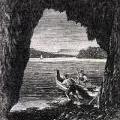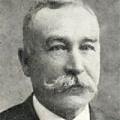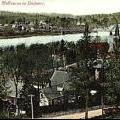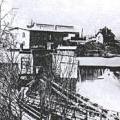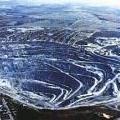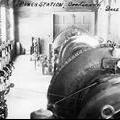The Canada-U.S. Border
 The border separating Quebec’s Eastern Townships from the United States was determined by the terms of the Quebec Act in 1774. At that time, both Canada and the American colonies to the south were dependencies of Great Britain. The border was established – on paper at least -- at 45 degrees north latitude.
The border separating Quebec’s Eastern Townships from the United States was determined by the terms of the Quebec Act in 1774. At that time, both Canada and the American colonies to the south were dependencies of Great Britain. The border was established – on paper at least -- at 45 degrees north latitude.
